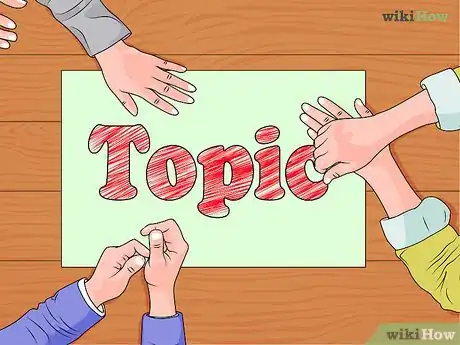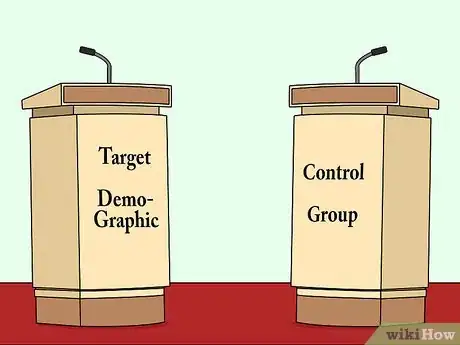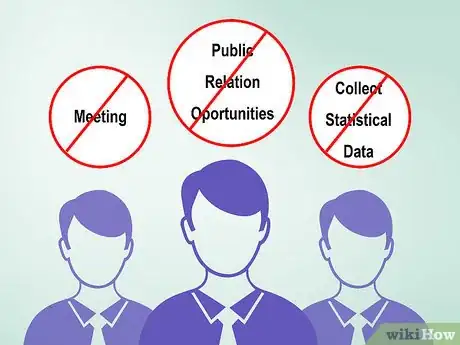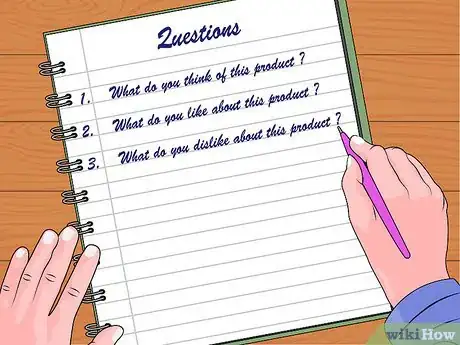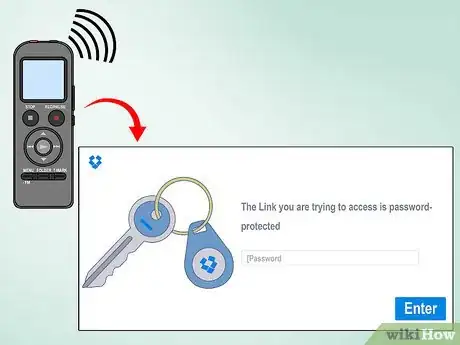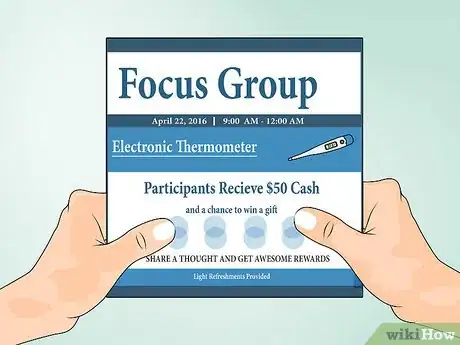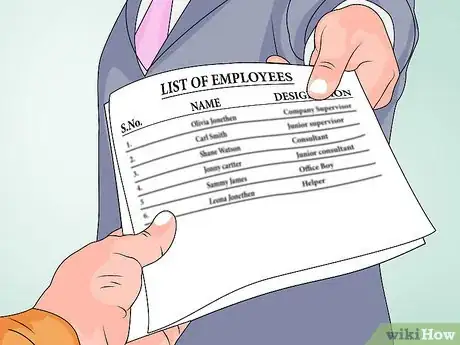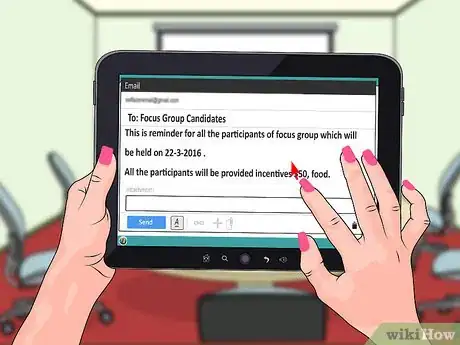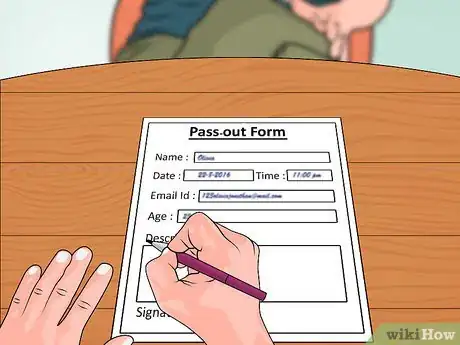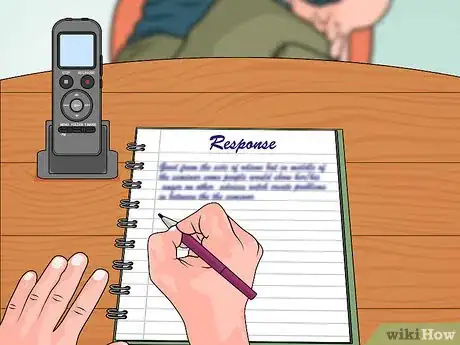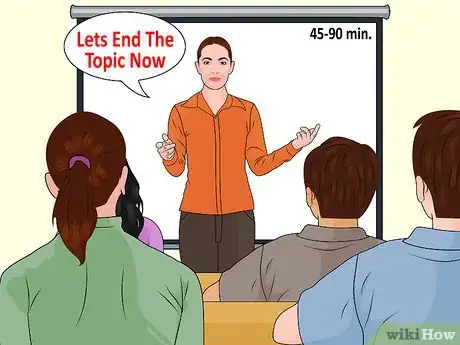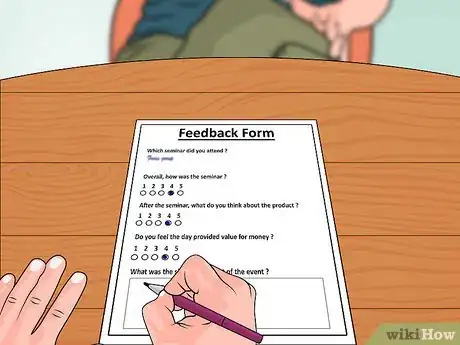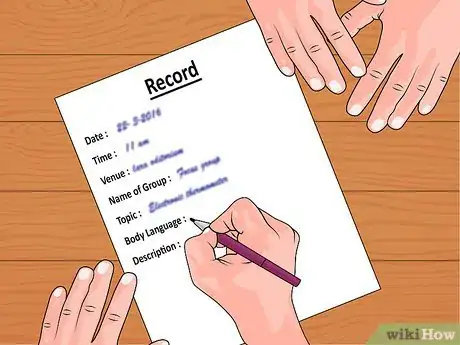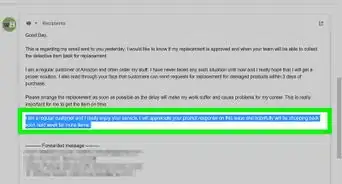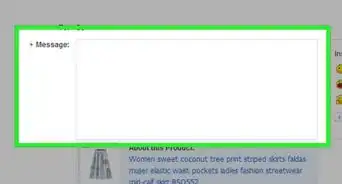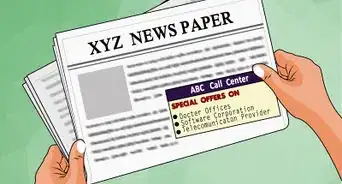wikiHow is a “wiki,” similar to Wikipedia, which means that many of our articles are co-written by multiple authors. To create this article, 16 people, some anonymous, worked to edit and improve it over time.
wikiHow marks an article as reader-approved once it receives enough positive feedback. In this case, 93% of readers who voted found the article helpful, earning it our reader-approved status.
This article has been viewed 130,155 times.
Learn more...
A survey is typically a quicker and more precise way to conduct qualitative research than a focus group. Focus groups, however, allow you to get more complicated, nuanced, and diverse responses than surveys, which do not permit as much participant interaction. In short, focus groups are the best way to get a full array of perspectives. The success of focus groups, though, is heavily dependent upon the skilled leadership of its moderator.[1]
Steps
Planning a Focus Group
-
1Pick a single, clear purpose. This is an opportunity to learn the nuanced opinions of clients, potential customers, staff members or a community. Ideally, you'll only be talking to one of these groups per focus group. They'll be expressing opinions on one topic, which should be kept to a single product or issue. There's a reason it's called a focus group.
-
2Narrow down your target audience. Are you researching how your product is received among adolescents? What age range specifically? Do they have specific interests, hobbies, or spending habits? The more specific you can get this, the better you'll be able to guide your recruitment and find useful opinions.
- If your target audience includes members of a specialized profession, such as doctors, don't try to combine them with other demographics. They will be most likely to speak freely around people from the same background.[2]
- If you are concerned with workplace satisfaction, consider targeting certain job positions at which employees seem to be particularly discontent.[3]
Advertisement -
3Consider organizing a control group. If you have the resources to run two focus groups, consider running one focus group with participants from your target demographic, and one audience from the broader pool of potential customers or community members. This second "control group" helps you separate the unique opinions of the target demographic from opinions that are more widely shared.
-
4Refrain from using the focus group for ulterior motives. Focus groups are less effective when the facilitators or clients try to move beyond the original scope of the project.[4] You may need to correct the participants in your focus group about some of their misapprehensions about the purposes of focus groups.
- A focus group is not a meeting. You are not trying to achieve consensus or come up with a solution.
- A focus group is not a public relations opportunity. Don't go out of your way to present your organization in a good light.
- A focus group is not a way to collect statistical data; the sample size is too small and the data is qualitative.
-
5Find a second facilitator. An assistant can take notes and handle the recorder, so that you can focus on facilitating the discussion. The assistant should not participate in the discussion, else the facilitators dominate the discussion and the authority of the lead moderator be undermined
- The assistant should, however, introduce themselves prior to the beginning of the focus group. This is important for making participants feel comfortable with an additional person in the room.
- No one else should be present unless they have a clear role, such as managing snacks and sign-in sheets. Unnecessary spectators can make participants nervous.
-
6Choose a comfortable venue and recording method. Find a private area where participants will feel relaxed and comfortable. Video cameras or one-way observation mirrors are often used for market research, but they are not appropriate for focus groups covering sensitive or stigmatized topics. Use an audio recorder instead if you are concerned about the effect of observation on participant comfort.
- Organizing seats into a circle will make all participants feel more equal and comfortable participating than if, for example, they are sitting at a rectangular table with one person at the head.[5]
-
7Prepare questions. Design the questions to encourage participants to open up and talk about their opinions in depth. Avoid yes-or-no questions, since people are more likely to respond "yes" to please you. Instead, use open-ended questions like "What do you think of this product?" or questions that describe both choices, such as "Do you think the color of this product should be changed, or kept the same?"
- Avoid technical terms and jargon. Keep sentences short and focus so that they do not confuse participants. Avoid questions that might embarrass participants or intimidate them into silence.
- Begin with questions that encourage participants to talk generally about the subject to make them comfortable and familiar with the topic of conversation. For example, “How do you like to use your smart phones?” Move on to questions that get to the substance of the discussion: “How likely would you be to use a thesaurus app?” Before concluding, ask if anyone has something else to say that did not come up earlier in the discussion.
- Ask positive questions to establish comfort, before moving on to more negative questions. Ask: “what do you like about this product” before asking “what do you dislike about this product?”[6]
-
8Plan out how you will record data. Before you begin acquiring data, you will want to consider how you will store it. That means not only getting a tape recorder, but also thinking about a format in which you can organize and sort through your data. For example, an excel spreadsheet can be used to record responses and label them according to common themes. This database will ultimately be used to account for how many of a particular type of response you received and serve as an ease go to source for particularly impactful quotes on any given subject.[7]
- Remember to keep data in a password protected location, especially if you are working in a university system that requires strict privacy measures. If the data needs to be shared with multiple researchers, use a password protected online database like Dropbox.
Recruiting Participants
-
1Write your advertisements to whittle down potential applicants. Use clearly worded announcements and an introductory questionnaire to make the requirements, date, and time as obvious as possible. If you are looking for a particular type of participant,—for example. people of a particular age group—make this clear in the advertisement.
-
2Use targeted advertising. Advertise your focus group in a method that is most appropriate to your target group. For community issues, talk about your project with workers at community organizations and ask them to pass on emails or envelopes to their members. Post posters at places where people of your target demographic are likely to visit.
-
3Solicit participants within an organization. If, for example, your focus group pertains to employees of a particular company, you can choose names randomly from a list of employees. You can also ask bosses to nominate individuals who will have a particularly good knowledge of the subject. For a more targeted approach, you can interview established committees or groups of people with the same job title.
- When participation isn’t random, you should be mindful of whether the intergroup dynamics of people who know one another will hinder your research. Will the presence of an authority figure scare some? Is there a group of people who are particularly close that might come to dominate the discussion?
-
4Offer incentives. Offer "goodie bags," money, coupons, paid time off, or free food and drink. Incentives are a major reason for people to join focus groups, and the participants should be compensated for providing valuable information.
- In most cases, you will need to offer at least $50 to adequately reward a participant. However, you could also offer a single big reward to the winner of a random drawing. Perform the drawing in person at the end of the focus groups, so that no one suspects wrongdoing.
-
5Recruit six to ten people. This is large enough to get a diversity of opinions, but small enough that everyone should be comfortable. It is probable that 10%-20% of participants who sign up will miss the focus group. However, you do not want more than ten people to arrive. If you invite ten to eight people you should have a comfortable number of discussants.
-
6Coordinate a meeting. Establish that all members of the group are willing and able to meet at a particular place and time. Once you have established that this is the case, send out a written confirmation two days in advance of the focus group to remind them of the meeting. In the note, thank them for their participation and remind them of the date, time, place, and rewards for the focus group.
Running the Focus Group
-
1Pass out forms. You will want to pass out a short consent form that explains in two or three paragraphs the purpose of the study. Note that responses will be recorded. Sometimes you might want to include an additional form where participants provide demographic information, including their background with the subject in question.
- Any demographic forms should take no more than three minutes to complete.
- Plan to have participants arrive 15 minutes prior to the beginning of the actual focus group. This will give them time to fill out paper work, have a bite to eat, get comfortable, and introduce themselves.
-
2Have the participants introduce themselves. People are typically more comfortable sharing opinions if they know a little bit about the other people in the group, even if it's just their names. This is especially true for focus groups on controversial community issues.
- Often an icebreaker question like, “Where does everyone come from” or “where would everyone most like to go on vacation” can make people feel at ease.
- Set up a table at the entrance to the venue with name tags. If the focus group is composed of anonymous strangers, place random numbers of the name tags to use. Use these numbers to identify participants.
-
3Announce the purpose of the meeting. Prepare an introduction that concisely explains the reason for the group to meet. Don't assume people are at all familiar with the topic at hand, or how a focus group functions. Explain that this is a brainstorming session, for sharing as many detailed opinions as possible.
- Remind them that the focus group will be recorded, but that there are no right answers and that the purpose is to get their opinion.
-
4Ask questions to guide the discussion. Use one of your prepared questions to kick off the discussion. Stick with the topic until you have achieved good responses, before moving on to the next. Use additional, unprepared questions to ask for more detail if the participants are giving brief answers.
- Encourage people to expand on their responses by asking them “Can you say more about that?” Alternatively ask if they can provide an example of what they are talking about. Summarize what someone has said and ask if others feel the same way. If someone isn’t talking, turn to them and inquire as to their thoughts on what has just been said.[8]
- You should generally enter with no more than 10 prepared questions. Ideally, your questions should encourage participants to talk among themselves, so that you can withdraw from the conversation.
-
5Stay neutral and empathetic. Don't insert your personal opinion into questions, or let the participants know your views on the topic. Avoid leading questions like "Don't you think it would be better if...?" Participants should feel as if the moderator is legitimately interested in everyone’s feelings.[9]
- To make participants comfortable it is important that the moderator is someone they can relate to but also respect. For example, choosing someone of the same gender as the focus group can be important for making the participants feel like they have an empathetic host.
- Constantly scan the room and establish eye contact, especially with those who have been speaking less frequently.[10]
-
6Record responses. The assistant should manage the tape recorder and write down comments in case the recorder fails. The assistant should also, however, be attentive to things that won’t be recorded. Note, for example, body language when it seems bear on how the participant feels about the topic.
-
7Prevent any one individual from dominating the conversation. If one participant talks more often than the others, it's your job to politely put a stop to it. The best tactic is typically to encourage other people to speak up, with questions such as "Does anyone else have a different perspective?[11]
- After a particularly long and complicated response, it is good for the moderator to summarize what has been said. Once clarified, it will make it easier for participants to build off the comment. Also, the ability to recount such points makes the moderator appear vested in the discussion, encouraging participation.
- Your goal should be solicit as many different opinions from as many participants as possible. Keeping the conversation open and easy is crucial.
-
8Tamp down arguments. Explain that you're not trying to reach consensus, and that more opinions lead to more helpful data. If participants are still heated or argumentative, change topic to the next question.
-
9End the meeting within an hour and a half. The members of your focus group will become tired and, therefore, less productive somewhere between 45 to 90 minutes after the beginning of the focus group. Establish a set end time so that participants know what to expect. Adjourn by summarizing the useful results of the focus group, casting the focus group in a good light. Thank everyone for contributing.
-
10Provide opportunities for feedback and review. Give the participants a chance to provide feedback, using an anonymous system if the focus group didn't go smoothly, or if the participants are your coworkers. You as the facilitator can also review the event to better prepare the organization for the next one.
-
11Debrief. After participants have left the room, record the date, time, and name of the group on the recorder. Discuss important takeaways and body language cues with the assistant to make sure that these are recorded with the rest of the focus group information.
-
12Repeat. You generally want to ask three or four new groups the same questions. The purpose of a focus group is to get as many different opinions as possible. Therefore, you should ideally continue to hold focus groups until you are no longer hearing new ideas.
Warnings
- Focus group members may bring up false information or offensive opinions. Only correct them if the information is misleading to the question you're discussing, and do so as gently as possible.⧼thumbs_response⧽
Things You'll Need
- venue
- chairs
- signs pointing the direction of the venue
- flip chart with paper and markers to record ideas
- blank adhesive name tags with markers to fill out
- optional: data projector, laptop and extension cords
- optional: photos and videos to discuss
References
- ↑ http://ctb.ku.edu/en/table-of-contents/assessment/assessing-community-needs-and-resources/conduct-focus-groups/main
- ↑ http://books.google.com/books?id=HTOQOPlA2MsC&printsec=frontcover#v=onepage&q&f=false
- ↑ http://www.hse.gov.uk/stress/standards/pdfs/focusgroups.pdf
- ↑ http://books.google.com/books?id=HTOQOPlA2MsC&printsec=frontcover#v=onepage&q&f=false
- ↑ http://www.eiu.edu/~ihec/Krueger-FocusGroupInterviews.pdf
- ↑ http://www.hse.gov.uk/stress/standards/pdfs/focusgroups.pdf
- ↑ http://www.hse.gov.uk/stress/standards/pdfs/focusgroups.pdf
- ↑ http://ctb.ku.edu/en/table-of-contents/assessment/assessing-community-needs-and-resources/conduct-focus-groups/main
- ↑ http://www.hse.gov.uk/stress/standards/pdfs/focusgroups.pdf
About This Article
A focus group is a great way to survey a group of people and get their opinion on a product or campaign. To run your own focus group, the first thing you'll need to do is recruit around 6 to 10 participants. Put up advertisemets online and in places where your target demographic is likely to hang out, and offer cash, gift cards, or refreshments as an incentive. When they arrive for your group, explain what they’ll be doing and get them to sign consent forms. Then, ask questions to guide discussions around your topic. Make sure you record the session so you can analyze their responses afterwards. For more tips, including how to debrief your focus group at the end, read on!
